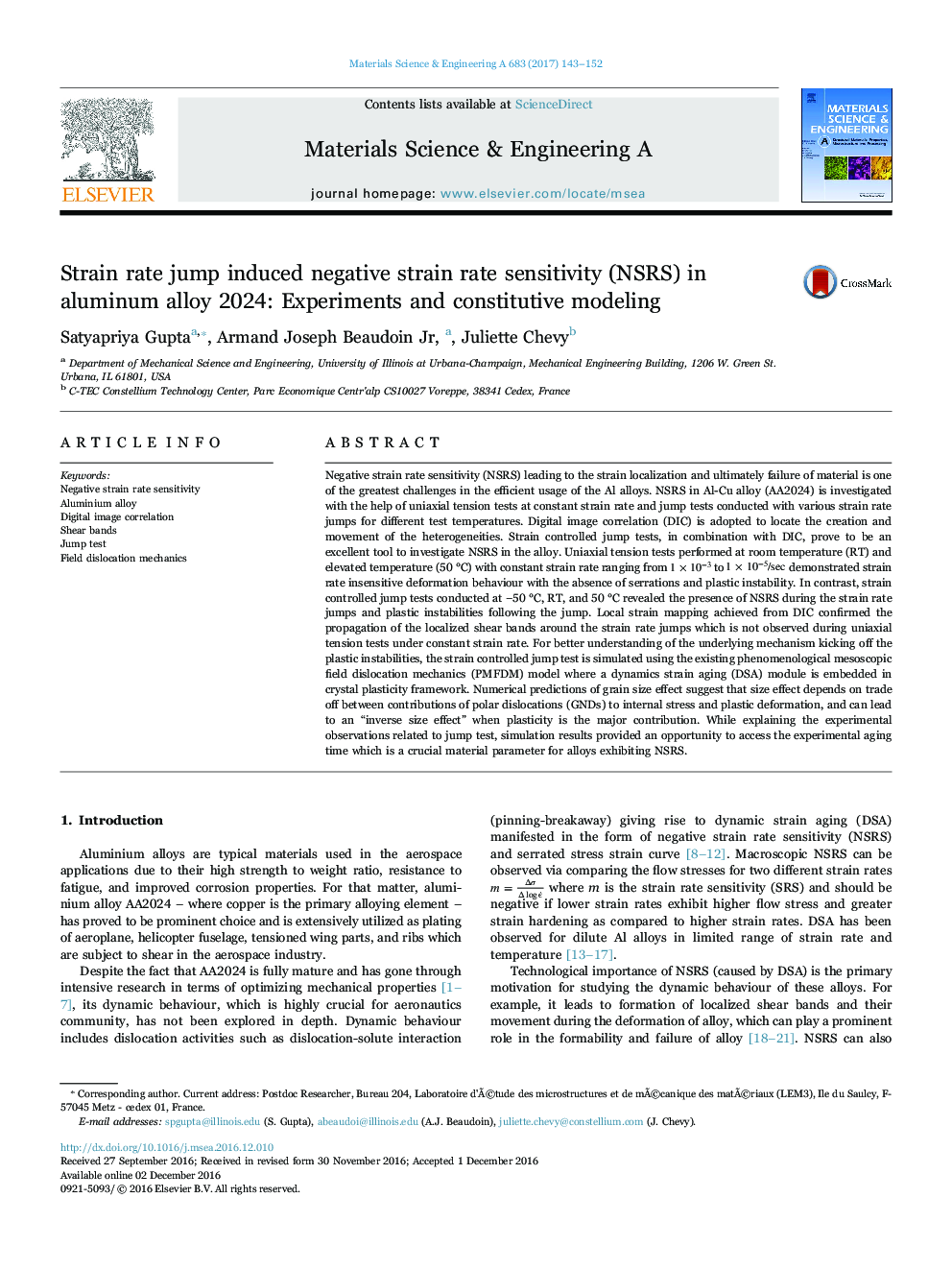| کد مقاله | کد نشریه | سال انتشار | مقاله انگلیسی | نسخه تمام متن |
|---|---|---|---|---|
| 5456094 | 1514660 | 2017 | 10 صفحه PDF | دانلود رایگان |
عنوان انگلیسی مقاله ISI
Strain rate jump induced negative strain rate sensitivity (NSRS) in aluminum alloy 2024: Experiments and constitutive modeling
دانلود مقاله + سفارش ترجمه
دانلود مقاله ISI انگلیسی
رایگان برای ایرانیان
کلمات کلیدی
موضوعات مرتبط
مهندسی و علوم پایه
مهندسی مواد
دانش مواد (عمومی)
پیش نمایش صفحه اول مقاله

چکیده انگلیسی
Negative strain rate sensitivity (NSRS) leading to the strain localization and ultimately failure of material is one of the greatest challenges in the efficient usage of the Al alloys. NSRS in Al-Cu alloy (AA2024) is investigated with the help of uniaxial tension tests at constant strain rate and jump tests conducted with various strain rate jumps for different test temperatures. Digital image correlation (DIC) is adopted to locate the creation and movement of the heterogeneities. Strain controlled jump tests, in combination with DIC, prove to be an excellent tool to investigate NSRS in the alloy. Uniaxial tension tests performed at room temperature (RT) and elevated temperature (50 °C) with constant strain rate ranging from 1Ã10â3 to 1Ã10â5/sec demonstrated strain rate insensitive deformation behaviour with the absence of serrations and plastic instability. In contrast, strain controlled jump tests conducted at â50 °C, RT, and 50 °C revealed the presence of NSRS during the strain rate jumps and plastic instabilities following the jump. Local strain mapping achieved from DIC confirmed the propagation of the localized shear bands around the strain rate jumps which is not observed during uniaxial tension tests under constant strain rate. For better understanding of the underlying mechanism kicking off the plastic instabilities, the strain controlled jump test is simulated using the existing phenomenological mesoscopic field dislocation mechanics (PMFDM) model where a dynamics strain aging (DSA) module is embedded in crystal plasticity framework. Numerical predictions of grain size effect suggest that size effect depends on trade off between contributions of polar dislocations (GNDs) to internal stress and plastic deformation, and can lead to an “inverse size effect” when plasticity is the major contribution. While explaining the experimental observations related to jump test, simulation results provided an opportunity to access the experimental aging time which is a crucial material parameter for alloys exhibiting NSRS.
ناشر
Database: Elsevier - ScienceDirect (ساینس دایرکت)
Journal: Materials Science and Engineering: A - Volume 683, 23 January 2017, Pages 143-152
Journal: Materials Science and Engineering: A - Volume 683, 23 January 2017, Pages 143-152
نویسندگان
Satyapriya Gupta, Armand Joseph Jr, Juliette Chevy,